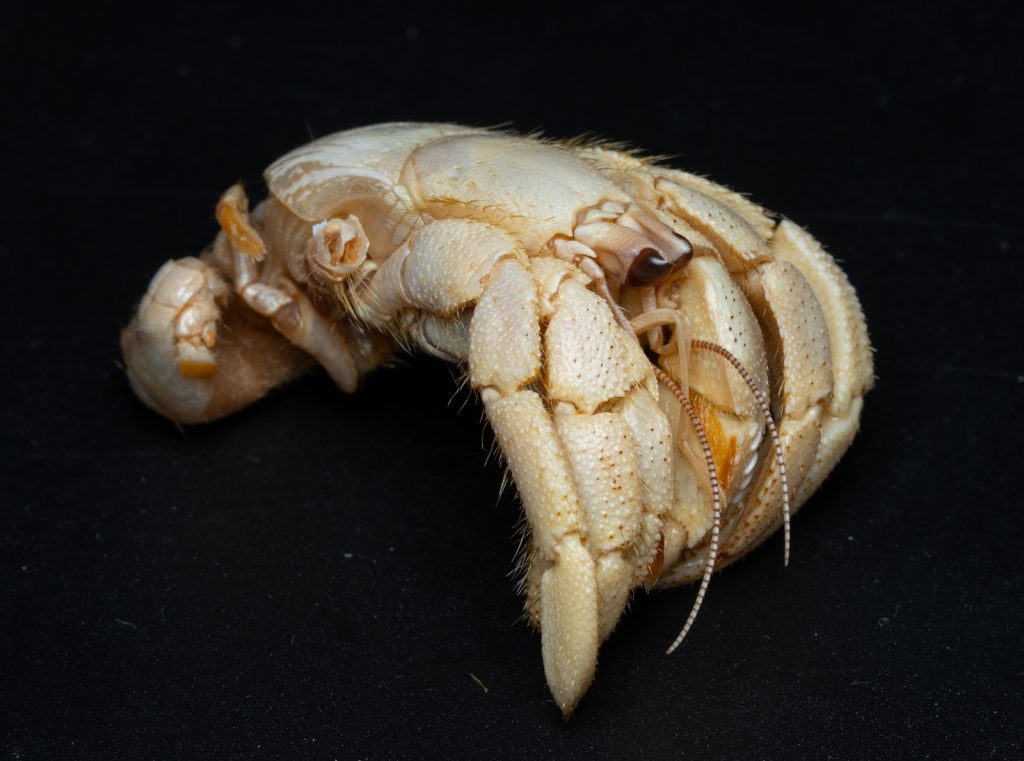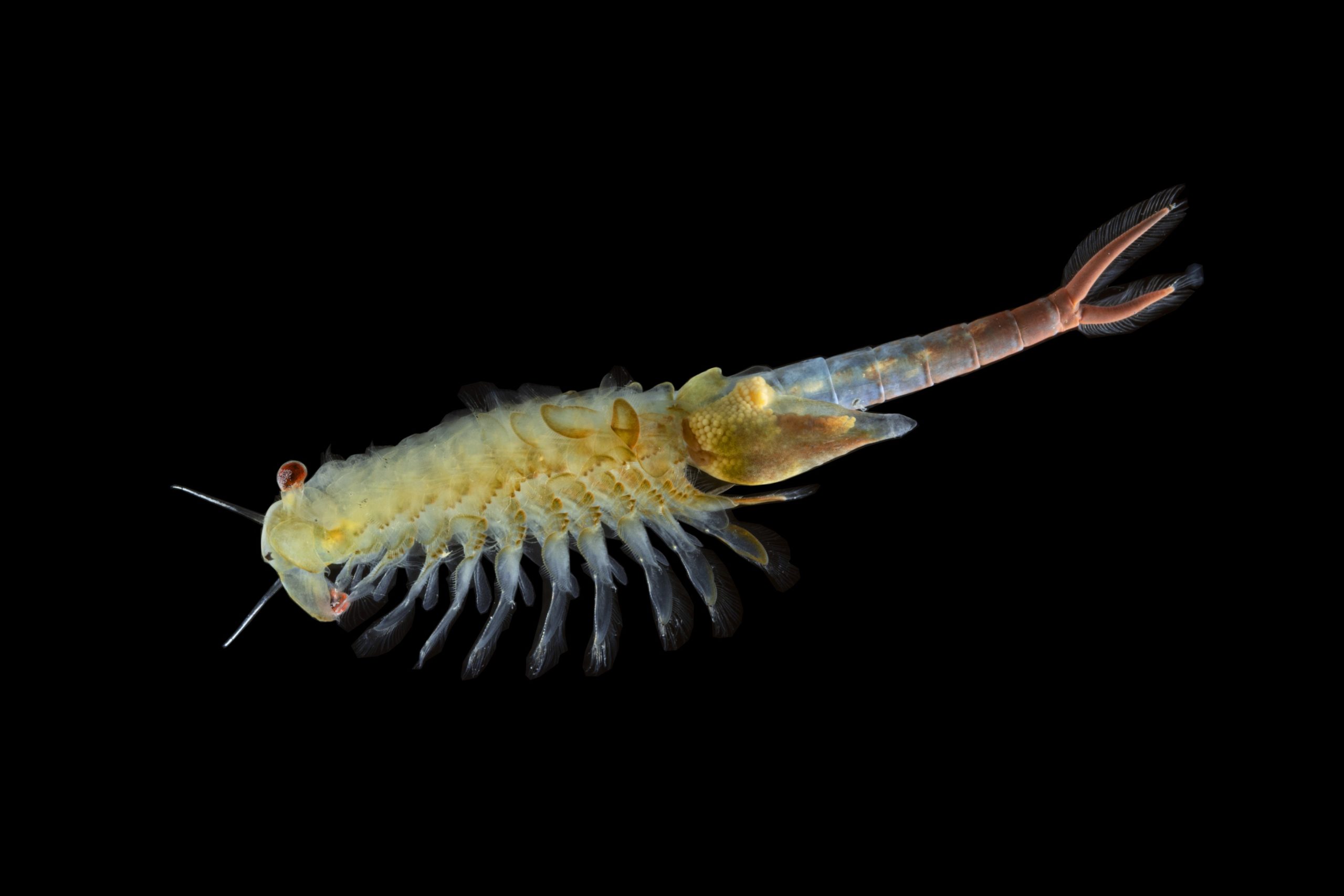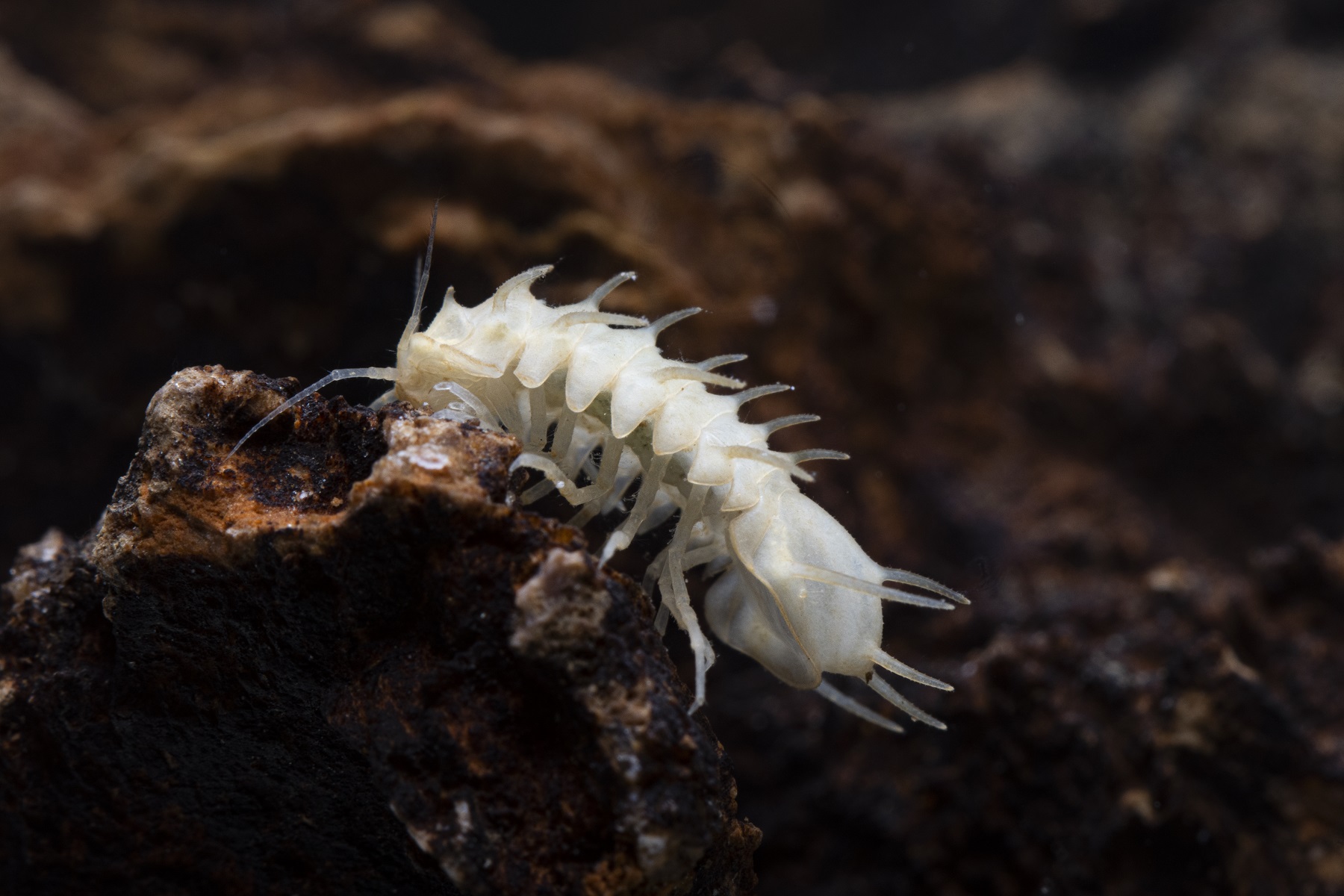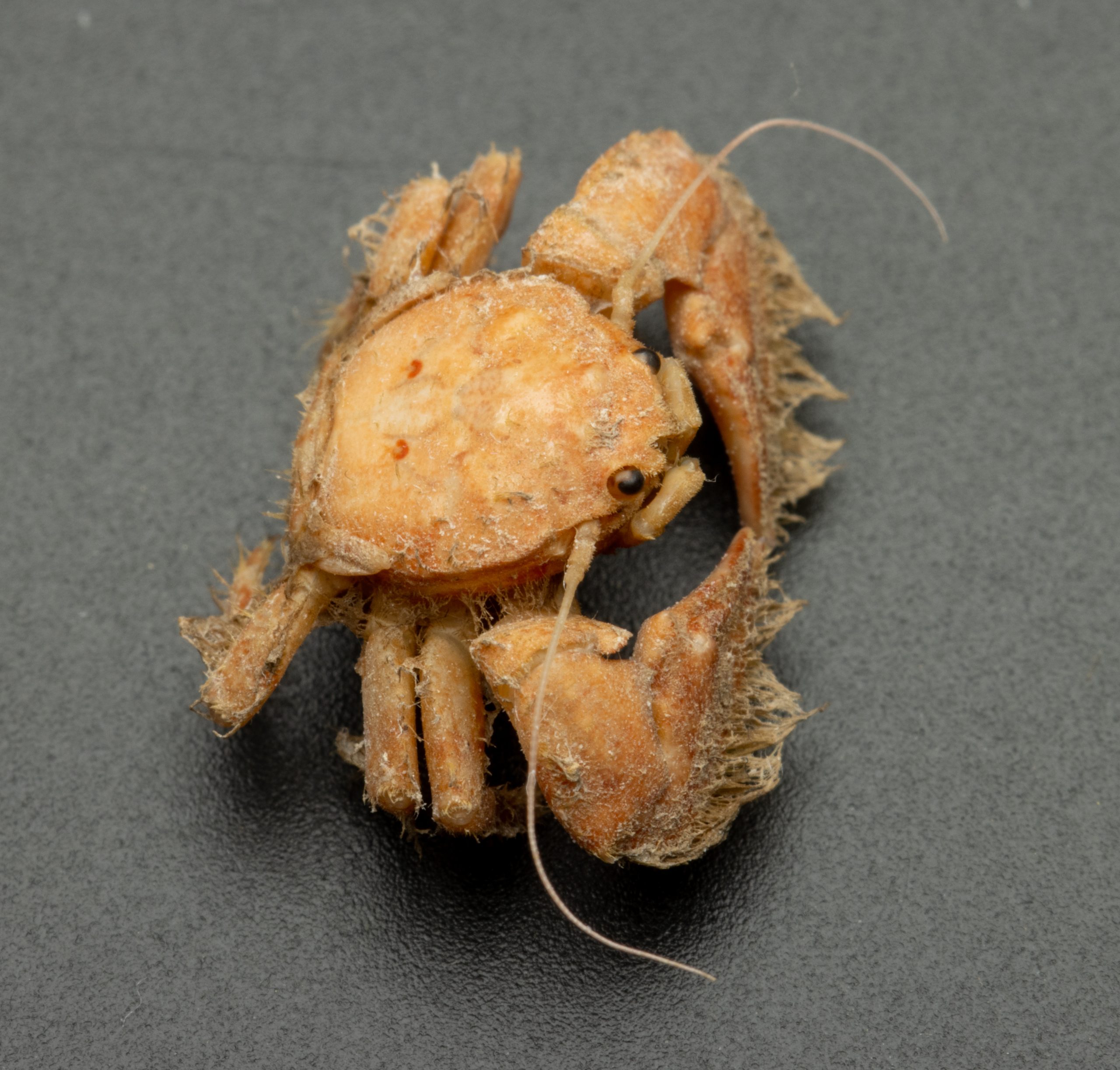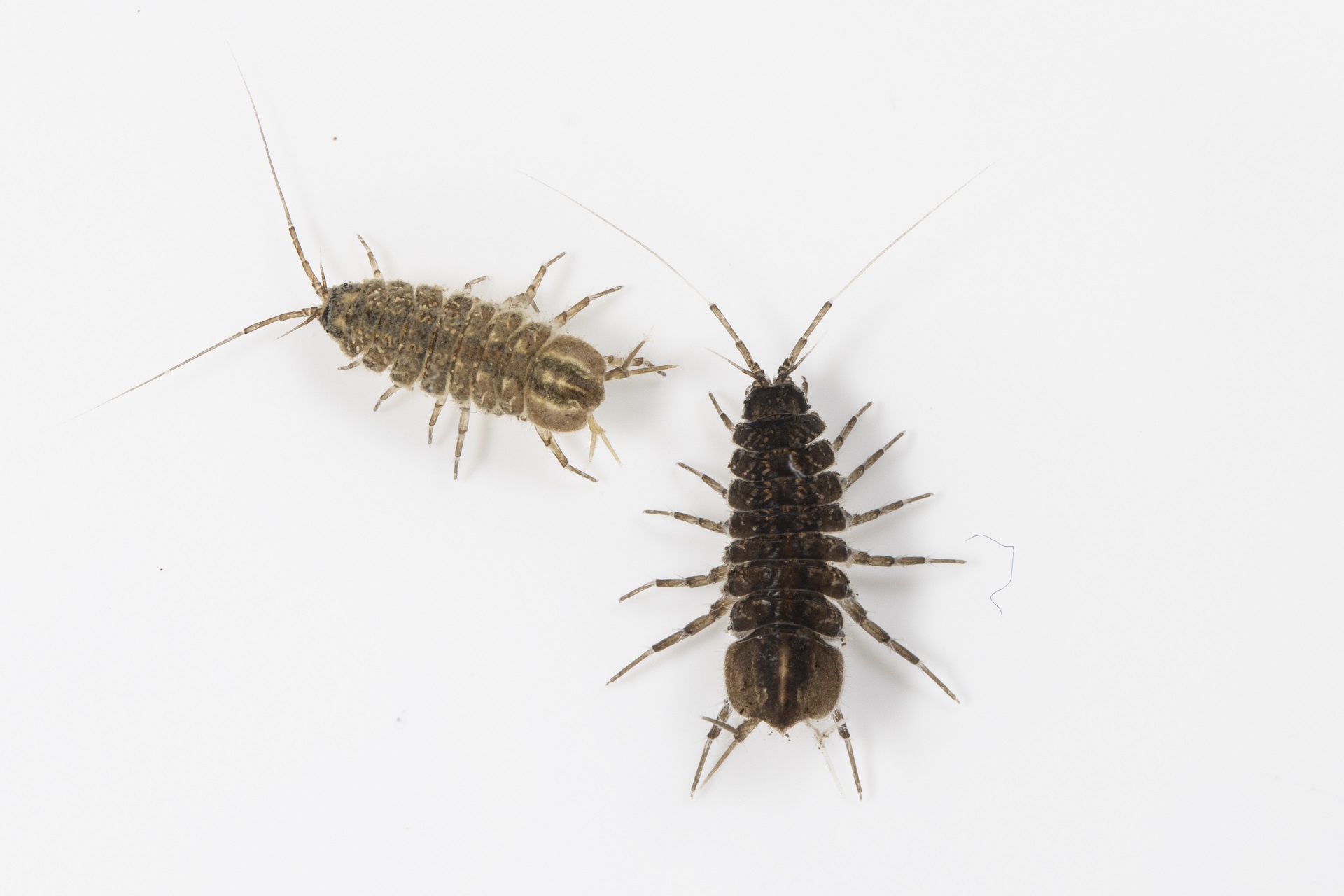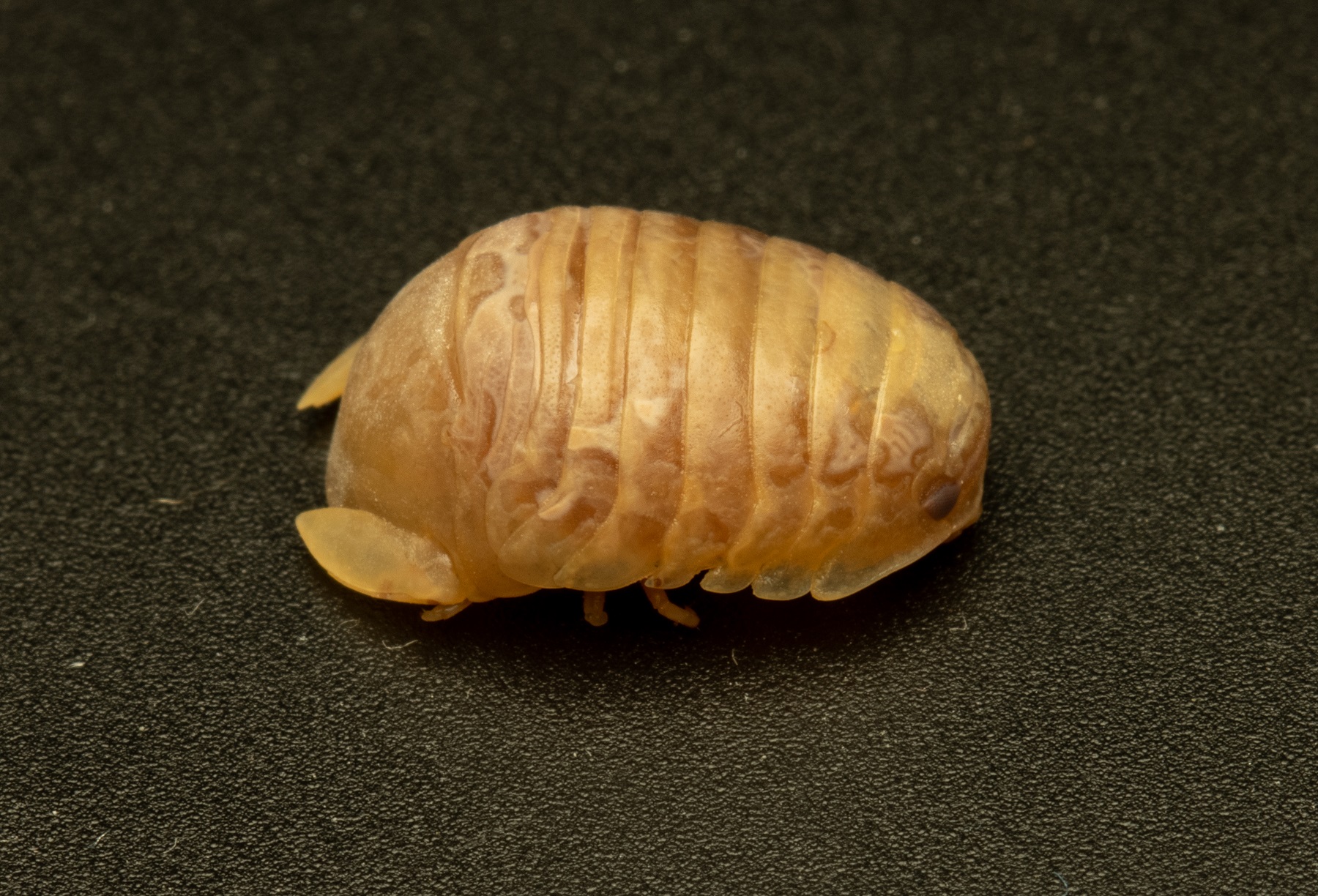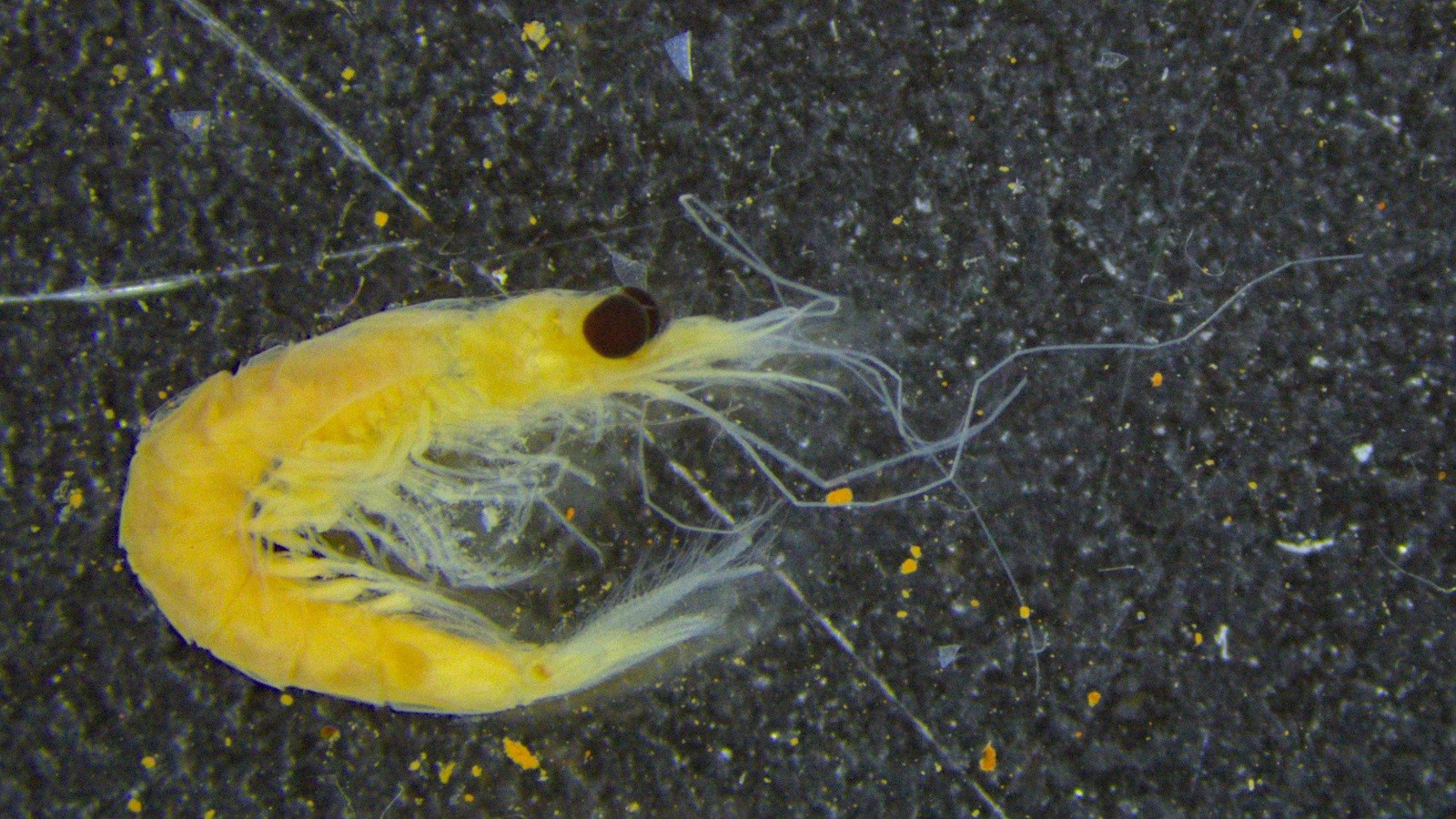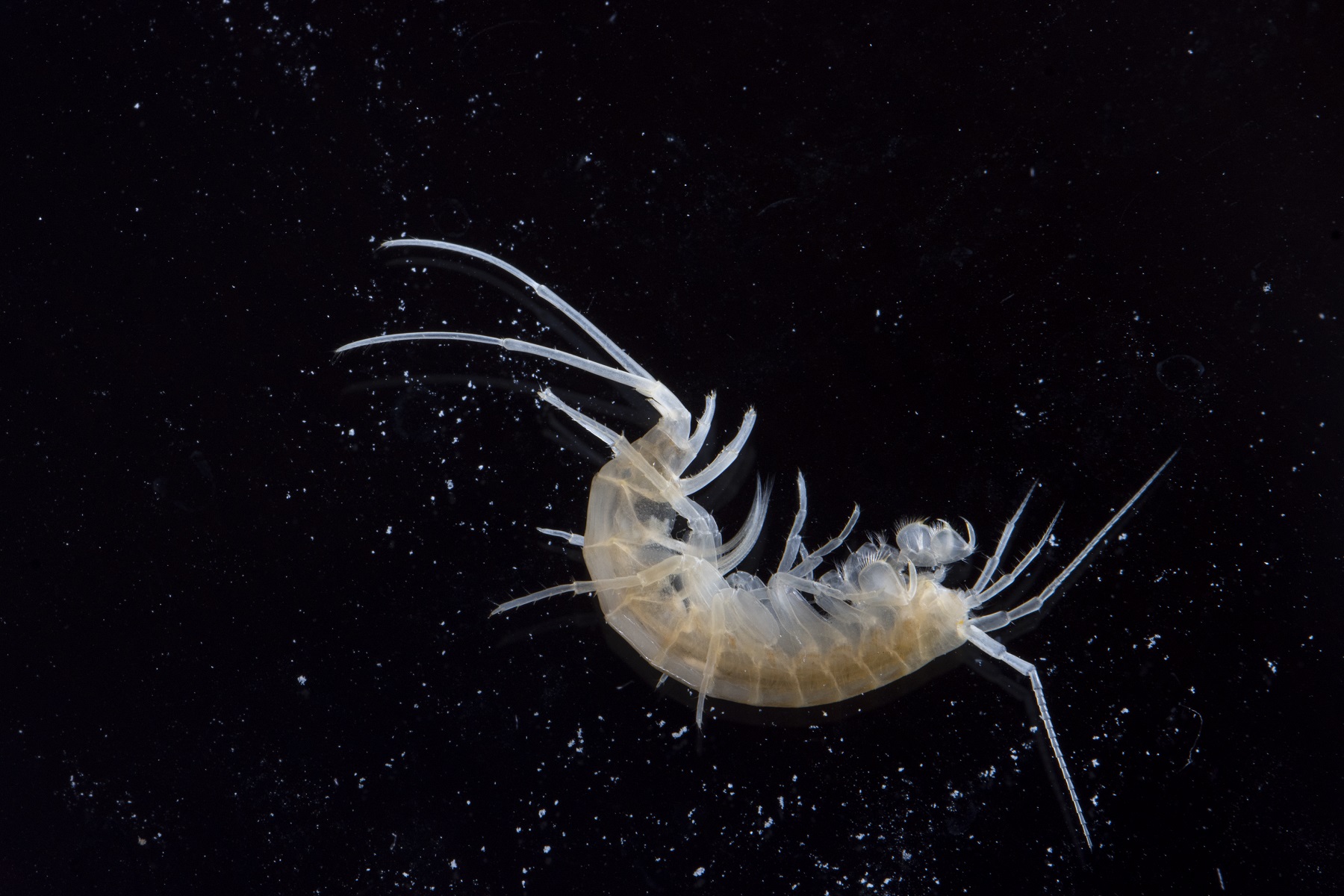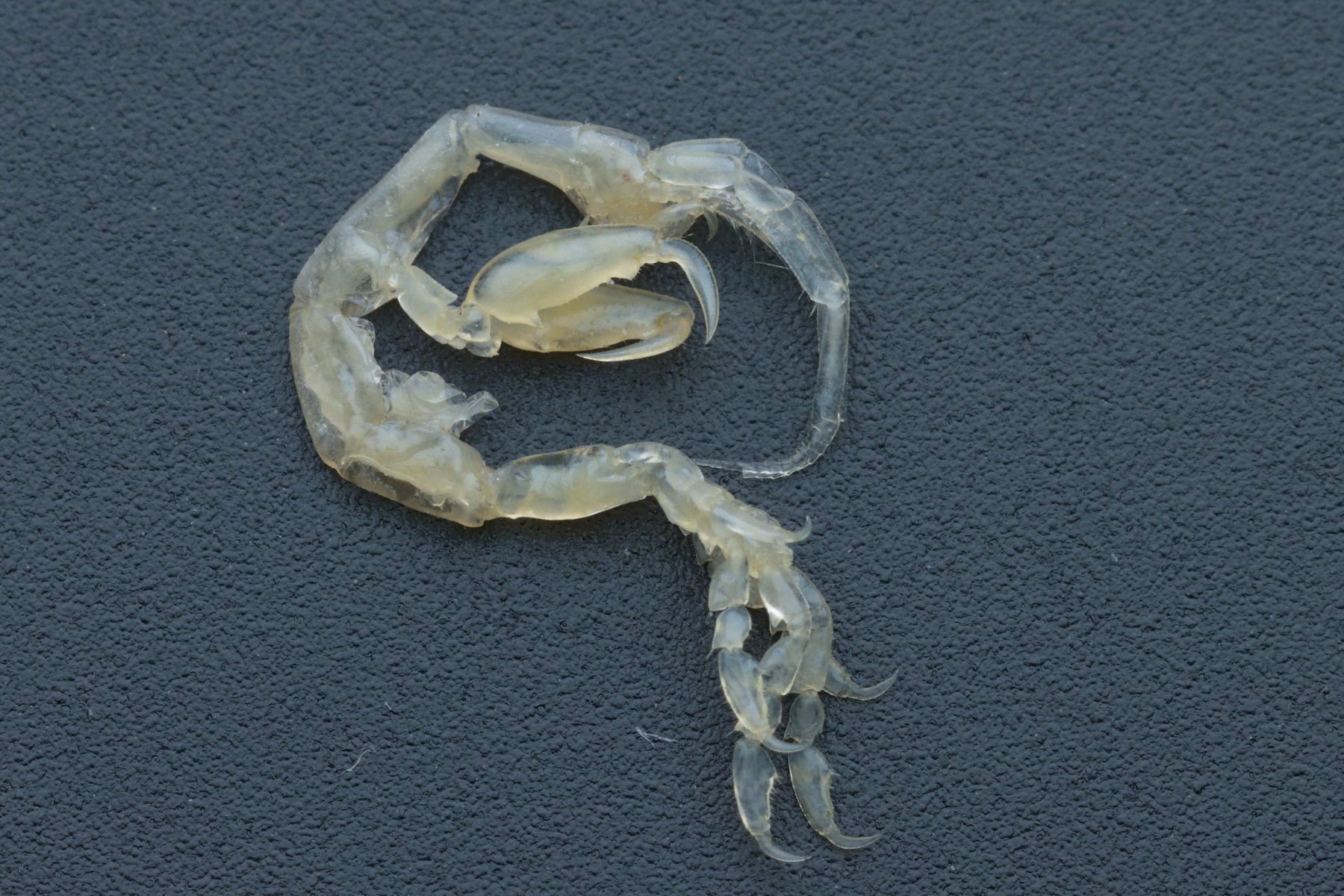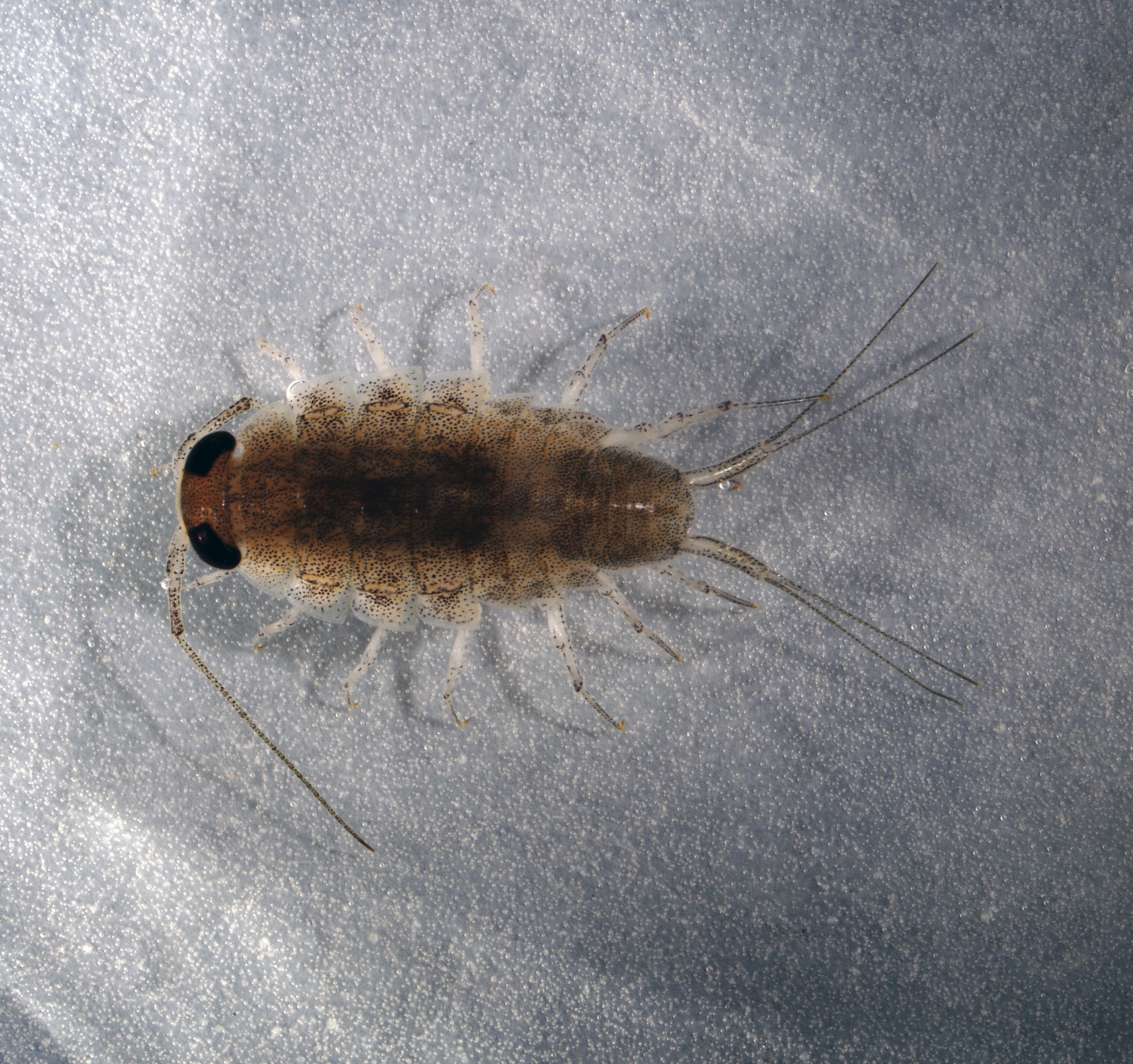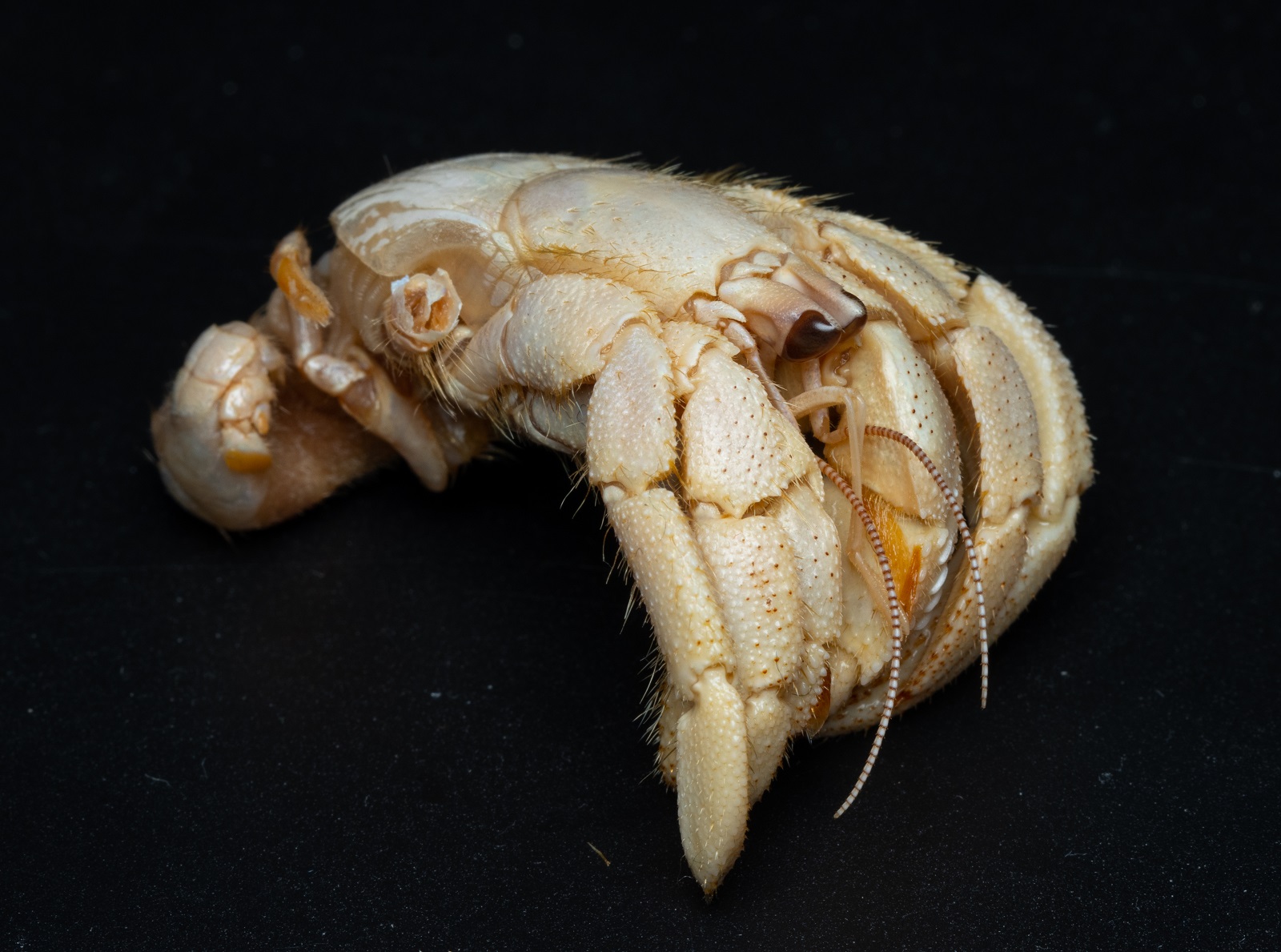- Crustaceans
Paguroidea
The size of the majority of hermit crabs is in the range of a few centimeters, although the largest species can reach sizes in the range of a few decimeters, including the coconut crab (Birgus latro) which can weigh up to 4 kg and is the largest known arthropod. The most distinct characteristic of the majority of hermit crabs is that they protect their soft uncalcified abdomens in shells, mostly mollusk shells such as gastropods.
The body of hermit crabs is, as in other decapods, composed of cephalothorax, pereon and pleon (abdomen). The cephalothorax and pereon are protected by a carapace.
The cephalothorax includes fused segments of the head (acron and five head segments) and three additional segments. The head segments bear a pair of stalked compound eyes, a pair of antennae I, a pair of antennae II, a pair of mandibles, a pair of maxillae I and a pair of maxillae II. Each of the three additional segments fused into the cephalothorax carries a pair of maxillipeds.
The pereon includes five segments, each bearing a pair of pereopods. The first pair of pereopods are chelate chelipeds. The second and third pair are well-developed and used for walking. The fourth and fifth pair are reduced in size and modified to clasp onto the shell.
The abdomen is soft, uncalcified and spirally curved to fit snugly into the shell. Primarily it consists of six segments and a telson, although the segmentation of the abdomen is indistinct. Small, calcified remnants of the tergites might be present in the abdomen. The pleopods are reduced and small if present. Uropods on the sixth segment of the abdomen are relatively well-developed.
The great majority of hermit crabs are benthic marine animals. A few species are adapted for the terrestrial lifestyle.
They are mostly omnivorous scavengers, although some are also predators.
An important limited resource for hermit crabs are the empty molluscan shells. As the hermit crabs grow they have to replace their shells with new ones of suitable sizes. Since the number of suitable shells is limited, the hermit crabs compete for them. Common is shell fighting when one hermit crab attempts to steal the shell of another. Vacant shells left by hermit crabs that found new larger shells are usually quickly inhabited by smaller crabs. This way a suitable shell might be used by numerous generations of hermit crabs. Other animals frequently coinhabit the shells with hermit crabs. When barnacles or gastropods of the genus Crepidula are present on the shell, they have a negative impact on the crab since they encumber the shell and impart its mobility. Well-known is the mutualistic interaction between the hermit crab and some sea anemones which protect the crab against predation.
The development of hermit crabs includes multiple larval stages. The planktonic larvae termed zoaeae hatch from the eggs and molt multiple times before they metamorphose into the benthic larvae called megalopae. Finally, the megallopae metamorphose into the adult crabs which inhabit suitable gastropod shells.
More photos
Related arthropods
Authors
- Urban Bogataj,
- Gregor Bračko,
- Teo Delič,
- Cene Fišer,
- Žiga Fišer,
- Rok Kostanjšek,
- Rudi Verovnik,
- Miloš Vittori,
- Valerija Zakšek.
Students Vito Ham, Vesna Jurjevič, Gaj Kušar, and Adrijan Samuel Stell Pičman also participated in the project.
